Día de los Muertos: Traditions, History & Contemporary Ways to Celebrate
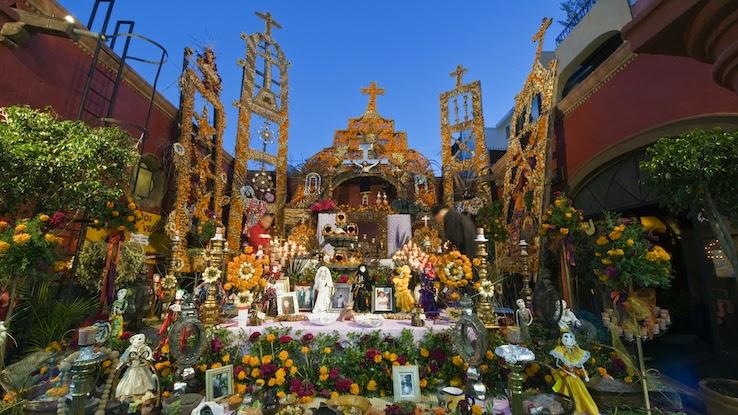
Día de los Muertos, or Day of the Dead, is an annual Mexican tradition celebrated in early November. Because skeletons and skulls are associated with the holiday, it’s often a celebration that people confuse with Halloween. But this two-day event isn’t about mischief, trick-or-treating or dressing up in spooky costumes — it’s one about celebrating family and love.
With this special holiday, people of Mexican heritage all over the world honor friends and family members who have passed away with food, music and other festivities. They also share stories and memories of those loved ones to pass these family histories to younger generations. In honor of the holiday, take a closer look at Día de los Muertos history, traditions and celebrations to understand what makes them so meaningful.
Día de los Muertos Celebrates Souls That Have Passed On
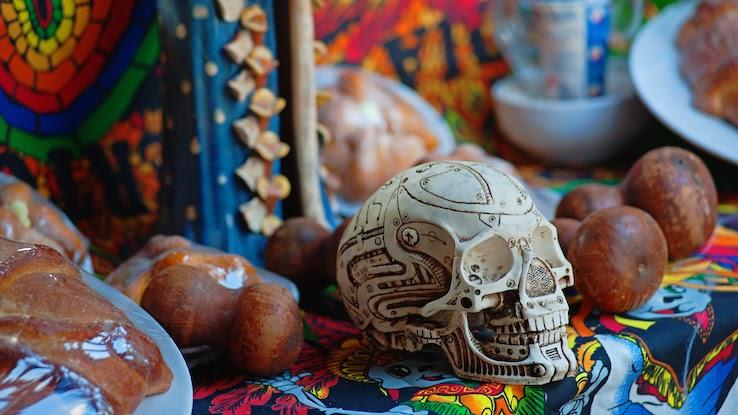
Día de los Muertos is celebrated in contemporary Mexico and among people with Mexican roots worldwide. It’s a lively celebration complete with food, music, parades, parties and other fun activities that lost loved ones enjoyed in life. It’s also a time when the dead are believed to travel from their final resting place once a year to spend time with their families on Earth.
Though it originally was held in the summer months, Día de los Muertos is currently observed in early November, and sometimes celebrations begin in late October. Although the holiday predates the introduction of Catholicism into Central America by centuries, the days when people commemorate Día de los Muertos coincide with All Saints’ Day and All Souls’ Day — holidays in the Catholic faith. On each day, families focus on different loved ones who’ve died. One day might be dedicated to children or people who passed in accidents, and another celebrates adults.
The Holiday Has Ancient Origins
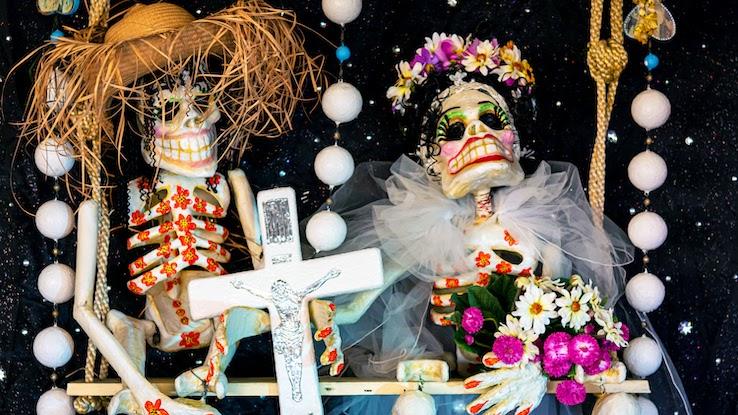
Día de los Muertos is more than 3,000 years old. Various Indigenous groups living in Mesoamerica, like the Aztecs and Nahua people, had rituals to honor the dead. They believed that death was a part of life but that the dead lived on in another world. When a person died, they were thought to travel to Chicunamictlán, the Land of the Dead.
Once there, the deceased person had to journey through nine challenging levels to make it to Mictlán, their final resting place. In ancient rituals held in August, family members left food, water and other offerings on their loved ones’ graves to help them with their journey. This trip was said to take years, and people kept the deceased well-supplied on the way by making these annual offerings.
Special Altars Called Ofrendas Share Offerings With Traveling Spirits
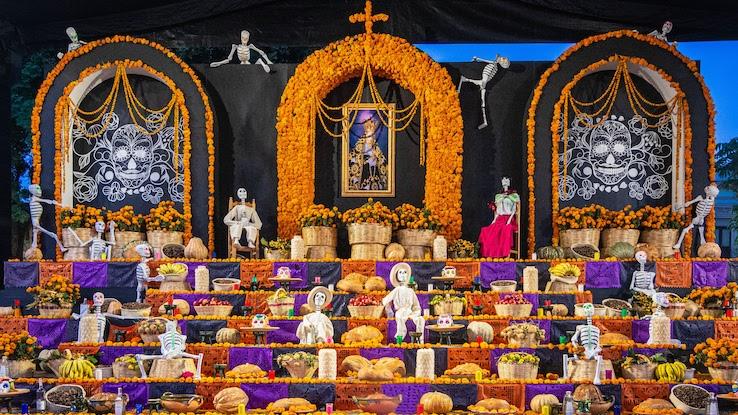
People who celebrate Day of the Dead today often create beautiful altars in their homes, called “ofrendas,” that they leave up throughout the holiday. On these altars, family members set up photos of loved ones who died, along with personal trinkets and important items that belonged to the deceased. They also place offerings on the ofrenda that represent the four elements: fire, water, earth and wind.
Candles are lit to help guide the spirits back to the Land of the Living to visit their families. Pitchers of water help the dead quench their otherworldly thirst after a long period of travel. Traditional foods, often breads, are laid on the ofrendas to represent earth. Other decorations that appear on ofrendas are “papel picado,” which are colorful paper banners with elaborate patterns that allow the souls to pass through. Many people adorn their ofrendas with toys, flowers and other sentimental items.
Artful Sugar Skulls and Skeletons Are Popular Symbols of Día de los Muertos
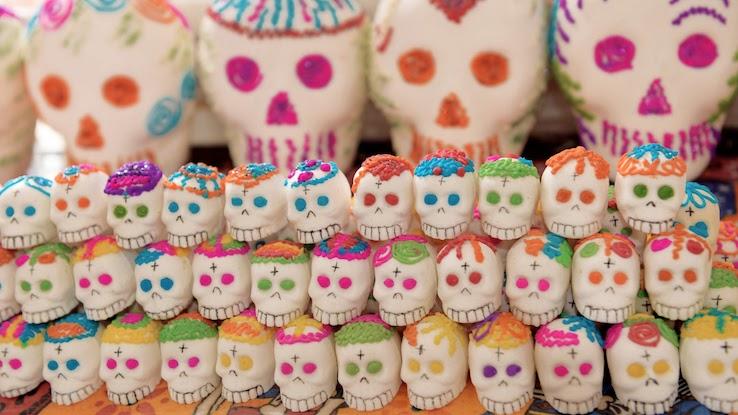
A big reason people think of Día de los Muertos as something of a Mexican Halloween is because of two key symbols of the holiday: “calacas” (skeletons) and “calaveras” (skulls). However, there’s more to the story behind why skeletons and skulls appear during Day of the Dead.
In the early 20th century, printer and cartoonist José Guadalupe Posada began adding skeletal figures in his politically charged art. He also used a popular drawing, known as La Calavera Catrina, or The Elegant Skull, to comment on the way Mexicans were adopting European cultural elements and fashions and abandoning some of their own traditions. La Calavera Catrina is a drawing of a skeleton wearing makeup and a fancy, flower-covered hat, and it became so popular that it was eventually adopted as a Day of the Dead icon.
Today, skeleton images, and particularly sugar skulls, are common Day of the Dead decorations. They’re made from a white sugar mixture pressed into special skull-shaped molds. The sugar mixture is then left to dry, and the skulls are decorated with icing, feathers, colored foil and other supplies. People give these skulls as gifts to living recipients and as ofrenda offerings to the dead. The bright colors are meant to be whimsical and fun as a celebration of the rich lives the deceased lived, not a somber reminder of what was lost.
Traditional Marigolds Add Even More Color to Day of the Dead
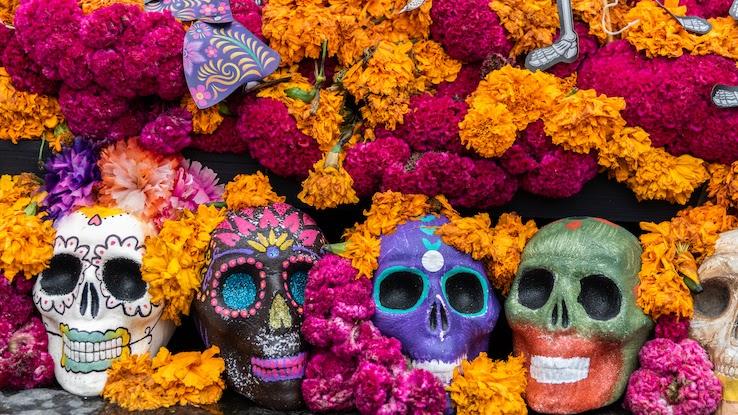
Marigolds, or “cempasúchiles,” are the flowers people traditionally use to decorate ofrendas, graves and other areas during Day of the Dead celebrations. These flowers are also known as “flor de muerto,” or flowers of the dead. The use of marigolds is tied to a romantic Aztec origin myth about two lovers, Xótchitl and Huitzilin.
As the story goes, the couple hiked to the top of a mountain to leave flower offerings for the sun god Tonatiuh. They also swore to love and commit to one another forever. After Huitzilin was killed in battle, Xóchitl prayed to the sun god to reunite them on Earth. Tonatiuh then sent a ray of sun that transformed her into a golden flower, the marigold, and reincarnated Huitzilin as a hummingbird. When Huitzilin approached Xóchitl with his beak, the newly transformed marigold filled the air with the potent scent of the flower.
With this legend in mind, people began to use orange and yellow marigolds to commemorate the date. The colors and scents of the flowers are believed to help guide the returning spirits to their families for the holiday.
Parties and Parades Help Everyone Celebrate Together
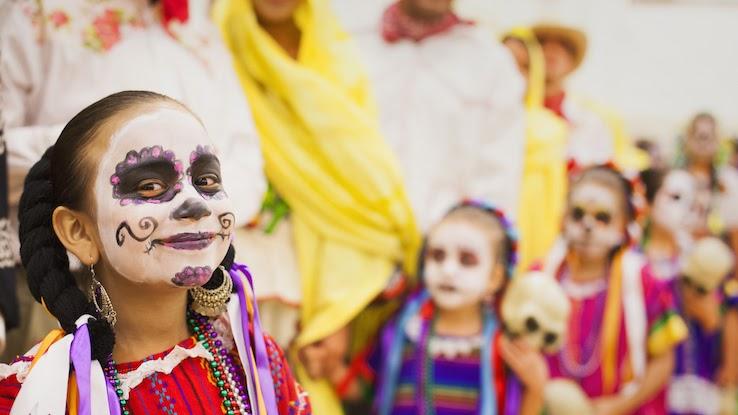
Día de los Muertos is truly a celebration — it’s a time of joyful remembrance and reflecting on how the deceased enriched their loved ones’ lives. Because of this, many people host parties for the holiday that include music, dancing and great food like “pan de muerto,” or bread of the dead. It’s a sweet bread made with anise seeds and decorated with bones and skulls made from dough. Some families also place their deceased loved ones’ favorite meals on their ofrendas and offer them at the parties to honor and feed those who passed on.
Different Mexican communities across the world also host parties and parades to commemorate the holiday. Some of the biggest take place in Mexico. In recent years, Mexico City has held a grand parade with large skeleton puppets, moving altars, mythical spirit creatures, marigolds, traditional dancers and other colorful, festive symbols that make Día de los Muertos a joyous holiday that celebrates the importance of family and friendship.





